Aeolara
The Aeolara are an ancient, ethereal species with strong connections to nature and their gods. They are highly capable, immortal beings who age slowly, maturing physically by age 25, but their true growth is defined by their spiritual and personal milestones. Their society values familial bonds, individual strength, and mutual support, with courtship focused on equity and growth rather than rigid roles. They live in harmony with their environment, building settlements that blend seamlessly with nature. Although they rarely form deep emotional attachments, they respect personal choice in relationships, and their connection to the land influences everything from their mood to the weather.
Basic Information
Anatomy
The Aeolara possess an elegant, graceful form that is slightly more delicate than humans but still robust. Their bones are lightweight yet stronger than human bones, allowing them to move with fluidity and agility.
are typically taller than humans, averaging around 6 feet tall. Their limbs are elongated and graceful, with a natural poise that makes them appear regal or ethereal.
While their frame appears delicate, their musculature is well-defined and lean. They are incredibly strong for their size, which reflects their supernatural abilities, whether it be through flight, manipulation of elements, or physical prowess in battle.
The skin of the Aeolara varies based on their elemental affinity. Their skin might shimmer or glow faintly, with colors that reflect their connection to nature. The Aeolara have heightened senses, allowing them to interact with the world in extraordinary ways
Biological Traits
- Divine Chosen Connection:
- Chosen by the Pantheon: Each Aeolara can be chosen by one of the pantheon gods .This connection to a specific deity grants the individual powerful magical abilities that are unique to the god that has selected them. The gods may choose an Aeolara based on their spiritual worthiness, their life purpose, or the greater needs of the world.
- Spiritual Transformation: Once chosen, the Aeolara undergoes a spiritual transformation that enhances their innate abilities and makes them more attuned to the deity they serve. This transformation might involve physical changes, such as changes in eye color, skin markings, or aura, which serve as a visible sign of their connection with the divine.
- Divine Abilities: The specific powers granted depend on the god they are chosen by. For example, a chosen of Solarius have powers over light and order, whereas a chosen of Lunara are skilled in secrets or the manipulation of night and shadow. These powers are intertwined with their physical and spiritual growth and manifest as they mature.
- Lifespan and Aging:
- Immortality with Purpose: Like before, the Aeolara are biologically immortal and do not die from natural causes, but they do have a purpose-driven lifespan. They can live for millennia, but they begin to age once they have fulfilled their life purpose. If chosen by a god, the Aeolara’s lifespan is typically linked to their service and the god’s plan for them. Once their divine purpose is complete, their aging begins, and they may live out their final years in reflection.
- Effect of Divine Selection on Aging: The aging process may be influenced by the divine connection. For example, a chosen individual may age slower as they grow closer to their purpose. Once the purpose is fulfilled, they may experience a spiritual "burn-out" where they begin aging rapidly, as if their divine energy is no longer sustaining them.
- Physical Appearance:
- Markings of the Chosen: A chosen Aeolara has visible marks or symbols on their body that represent their connection to their god. These symbols might appear as glowing tattoos, natural bioluminescence, or even ethereal wings (if chosen by a god of air or light). The aura around them can change depending on their godly connection, with those chosen by gods of light having a radiant glow, while those of the darker gods may emit a shadowy, more mysterious aura.
- Eye Color: The eyes of a chosen Aeolara are often vivid and unusual, reflecting the deity they serve. For instance, a chosen of Solarius might have golden or amber eyes, while one chosen by Umbra might possess deep purple or silver eyes. The color and intensity of their eyes also indicate their level of connection to the divine.
- Reproduction:
- Divinely-Enhanced Offspring: When an Aeolara is chosen by a god, their offspring may inherit some of the godly attributes. The offspring may show enhanced magical potential or be born with a deeper connection to the deity's domain. Reproduction remains a spiritual process, but the chosen's bond with their god may grant the offspring unique powers or blessings.
- Spiritual Parenthood: Parenting for the Aeolara is deeply tied to the spiritual legacy of the gods. The chosen may see their role as one of guidance rather than just biological reproduction. This relationship with their offspring can be mentoring, teaching them about the divine connection, and preparing them for their own connection with a god.
- Healing and Regeneration:
- Divine Healing: A chosen Aeolara may possess the ability to heal or regenerate more rapidly than their peers. This ability may be amplified by their connection to their god. For instance, a chosen of Aurelia (god of nature) could possess powers to heal plants and restore ecosystems, while a chosen of Solarius could have enhanced regenerative healing that also helps restore balance to other beings.
- Sacred Powers: Chosen Aeolara may also be able to heal others in divine ways, using their connection to the gods to cure ailments, mend broken bodies, and even revive the dying, depending on their deity.
- Diet and Magical Energy:
- Spiritual Sustenance: Due to their divine connection, the chosen Aeolara may not only rely on physical food for sustenance but also magical energy from their deity. For example, they may need to imbibe ritualistic offerings or consume magical food that is tied to their deity's domain (e.g., fruits from sacred groves or waters from holy springs).
- Physical Needs: While they can still consume regular food like berries and meat from animals within their lands, their divine energy helps them survive for longer periods without food or water. The consumption of normal food helps them maintain their connection to the land and their physical form.
- Psychological and Behavioral Influence:
- Divine Personality Traits: The chosen Aeolara may inherit some of the psychological traits or behavioral patterns of the god that selected them. A chosen of Lunara, for example, may exhibit more secretive, introspective, or mysterious traits, while a chosen of Solarius may embody qualities of leadership, honor, and light.
- Emotional Connection to the Land: The emotional state of a chosen Aeolara can have profound effects on the land. When a chosen is happy, at peace, or spiritually fulfilled, the land flourishes. However, when they are troubled, angry, or emotionally disturbed, it may result in droughts, storms, or disruptions in nature. The closer their emotional state aligns with the divine purpose, the more their connection to the land stabilizes.
- Social Expectations and Status:
- High Status: Being chosen by a god elevates an Aeolara’s social standing significantly. They are respected, sometimes even worshipped, and seen as conduits between the divine and the mortal realms. The chosen often have leadership roles, guiding their people in matters of governance, spirituality, and magical practices.
- Moral Responsibility: The chosen Aeolara carry the weight of their divine responsibility, and any failure to live up to the expectations of their god can be seen as a great dishonor. They must not only protect the lands but also uphold the morality and values that their deity represents.
Genetics and Reproduction
Biological Reproduction: The Aeolara reproduce biologically, similar to many land-dwelling species, with a gestation period and parental care. Their reproduction doesn’t require any special ceremonies or cosmic events.
Distinctive Trait: While they reproduce biologically, their offspring inherit certain traits or abilities based on environmental factors or emotional states of the parents during conception. This gives a unique cultural emphasis on harmony and well-being at the time of starting a family.
Parental Role: Both parents play an active role in raising their young, passing down knowledge, skills, and traditions, emphasizing community and continuity.
The period of conception is of 10 months.
Growth Rate & Stages
- Infancy (0–50 years)
- Equivalent to a human aged 0–5 years.
- Fragile and highly dependent on guardians.
- Traits and abilities are dormant during this phase, with survival instincts being their primary tool.
- Childhood (51–100 years)
- Comparable to a human aged 6–10 years.
- Physical and mental growth accelerates; early traits and abilities begin to emerge.
- The "Century Mark" Celebration is held at 100 years old, signifying survival in a competitive world.
- Adolescence (101–250 years)
- Corresponds to a human aged 11–25 years.
- Physical aging and distinct individual traits develop fully by the age of 250 (equivalent to 25 in human years).
- At this stage, they achieve peak physical and mental maturity.
- Known as the "Eternal Prime", their aging essentially halts here.
- Prime Immortality (251–1,500 years)
- Aeolara retain their physical appearance and vitality of a human aged 25.
- Their focus shifts to mastering abilities, building legacies, and fulfilling their purposes.
- They live in this prime stage for over a millennium, appearing timeless.
- Gradual Aging (1,501–3,000 years)
- Aging resumes gradually, corresponding to a human aged 26–60 years.
- This marks a reflective period where they pass on wisdom to younger generations.
- Physically, signs of aging begin to manifest after this stage.
- Elderhood and Final Purpose (3,001+ years)
- Equivalent to a human aged 60+.
- Wisdom and mastery over their abilities peak, but physical resilience wanes.
- The Aeolara naturally pass away upon fulfilling their life's purpose, often leaving behind legacies tied to their achievements or lineage.
Key Cultural Milestones
- Age 100: A significant celebration for survival and early development.
- Age 250: Known as the "Eternal Prime Celebration," marking the transition to a period of sustained vitality.
- Gradual Aging: Seen as a sacred phase tied to spiritual connection, celebrated rather than feared.
Ecology and Habitats
- Environment Preference: The Aeolara thrive in lush forests, vibrant grasslands, and serene mountain ranges, favoring tropical climates. They experience seasonal changes but rarely snow.
- Interaction with Ecosystem: Like humans, they utilize flora and fauna for transportation, sustenance, and materials but practice strict moderation to prevent environmental degradation.
- Diet:
- Their diet consists of natural produce, including berries and plants unique to the fae lands.
- They also consume meat from fae animals, ensuring sustainable hunting practices to maintain ecological balance.
- Kings and Queens' Role: Monarchs share a deep, magical connection with the land, influencing biodiversity and weather with their emotions. They possess the rare ability to create new islands or reshape the landscape.
- Settlement Types:
- Villages, cities, strongholds, and palaces seamlessly blend with their surroundings, mixing construction with the natural world.
- Architecture incorporates living trees, stone formations, and flowing water, making it feel alive and harmonious with the land.
- Sacred Locations:
- Worship sites for gods and ceremonial grounds for significant events like royal marriages and public gatherings.
- Permanent Dwellings: The Aeolara establish long-term homes, similar to humans, with settlements ranging in size and importance.
Dietary Needs and Habits
- Primary Diet:
- The Aeolara are omnivorous, consuming both plants and meat.
- Their diet primarily consists of:
- Fruits, berries, and nuts: Grown in their fertile, enchanted lands.
- Herbs and vegetables: Cultivated in harmony with nature or foraged from the wild.
- Meat: Obtained from fae animals that inhabit their lands, hunted in moderation to avoid overharvesting.
- Magical Food Sources:
- Some Aeolara consume rare, magically-infused plants that enhance their abilities or maintain their longevity.
- Examples:
- Luminfruit: A glowing fruit that replenishes magical reserves.
- Dewshard Leaves: Leaves imbued with life energy, used in sacred meals.
- Sustainability Practices:
- Hunting and harvesting are strictly regulated to prevent ecological damage.
- Rituals often accompany the taking of life, whether plant or animal, to honor the balance of nature.
- Cultural Eating Habits:
- Meals are seen as communal events, often shared with family or settlements.
- Food preparation incorporates local traditions, blending culinary artistry with magical touches.
- Seasonal festivals: Feature grand feasts showcasing the bounty of their lands.
- Unique Traits:
- The Aeolara's metabolism is slower than humans, allowing them to sustain themselves on less food.
- They prefer fresh, unprocessed green ingredients, viewing food as a way to connect with nature and the land, but they still cook too.
- Forbidden or Avoided Foods:
- Anything that could harm their environment or disrupt the balance of their lands is avoided.
- Some species of plants or animals are sacred and not consumed.
Biological Cycle
- Birth and Early Years (0-100 years):
- Newborns are delicate but resilient, requiring nurturing care.
- They possess basic features that resemble their parents but lack distinct traits.
- The first 100 years are considered their childhood (equivalent to human years 0-10).
- At 100 years, a milestone ceremony is held, marking their survival and symbolic integration into Aeolara society.
- Adolescence (100-300 years):
- Adolescence spans from 100 to 300 years (equivalent to human years 10-20).
- They begin to develop their distinct physical, magical, and emotional traits around the age of 150.
- Training and education intensify during this period as they learn to master their abilities and connect deeply with their environment.
- Adulthood (300-600 years):
- Full maturity is achieved at 300 years (equivalent to 25 human years).
- They cease to physically age, maintaining a prime, youthful appearance until more than 3000 years .
- Later Life (3000+ years):
- After this many years they begin to age gradually.
- Their features start to show subtle signs of wear, reflecting wisdom and life experiences.
- Purposeful Aging and Death:
- The Aeolara's lifespan is tied to fulfilling their life purpose. Once their purpose is achieved, they begin a graceful decline, often retreating to sacred locations where their essence can return to the land.
- This process is deeply ceremonial, with the community honoring their contributions to society and the natural world.
Behaviour
- Familial Bonds and Relationships:
- Value of Family: While the Aeolara deeply value their familial bonds, they are not bound by them in the same way humans are. Relationships are meaningful and spiritual, but just like humans, if both parties no longer feel the need to remain together, they may break their vows. The dissolution of a bond is not taken lightly, but it is accepted as a part of life.
- Expectations and Honour: Breaking vows or severing relationships is considered a great dishonor, but it is not always viewed as betrayal. There is a cultural understanding that relationships may evolve, and if both parties agree that it is time to part, they do so with mutual respect. However, relationships that end without proper resolution may lead to loss of honor in society, particularly if the Aeolara involved is in a higher status.
- Attitude Towards Half-Bloods and Humans:
- Prejudices and Tolerance: The Aeolara are deeply disdainful of mixing with half-bloods or humans, particularly in a friendly or romantic context. For centuries, this practice has been seen as a betrayal of their pureblood heritage. However, as society has evolved, the older prejudices are softening. They may still harbor underlying hatred or suspicion, but the treatment of half-bloods and humans has become more tolerant, especially if those individuals are seen as esteemed or of significant importance. They may not openly express animosity, but the underlying distrust still lingers, especially when it comes to matters of inheritance, magic, or ancestry.
- Grieving and Moving On:
- Brief Grieving Period: The Aeolara, with their long lifespans, do not usually grieve for a lost partner for more than a few years. Their ability to move on quickly from relationships and find new partners is part of their psychological makeup, as they have had countless experiences with change and growth.
- Exception to the Rule: However, there is the rare exception of a profound connection between two individuals. In such cases, one or both may grieve for the loss of their partner for decades, even until death. This is viewed with great respect, but also as a disappointment by society, as they are expected to find new partners and not remain stuck in the past. Such grief is seen as a failure to adapt and evolve, a view deeply rooted in the Aeolara's emphasis on self-growth and progression.
- Social Hierarchy and Expectations:
- High Expectations for the Elite: Aeolara who hold positions of power or status—royalty, warriors, mages, and nobles—are expected to uphold ideals of leadership and responsibility. Their behavior is scrutinized more than that of common folk, and their actions can have a ripple effect on the entire community. They are held to higher standards, and failure to meet those expectations may result in a loss of status or even exile, though this is rare.
- The Role of Leaders: Those in positions of leadership, such as kings or queens, are expected to embody the ideal—not only in terms of power but also in their ability to lead by example, emotionally and spiritually. Leaders who fail to do so are seen as weak and their influence over the land and its people is compromised. The Aeolara's ability to shape the environment and its energy through their emotions makes them acutely aware of the weight of leadership, especially for those who are expected to be the guiding light for the people.
- Cultural Expectations and Behavior Norms:
- Adapting to Change: Aeolara society places great value on adaptability and growth. They are not overly sentimental and view evolution and change as inevitable. This may explain their ability to move on quickly from relationships and not remain in grief. Emotional attachment is important but not to the point of stagnation. The Aeolara believe that individuals must always strive to evolve and find new experiences to truly live.
- Respecting the Past, Embracing the Future: While tradition is important, overattachment to the past is discouraged. Aeolara are taught to honor their ancestors and preserve important cultural practices, but they must also be willing to let go and embrace the future, which means new ideas, new relationships, and sometimes, even new sources of wisdom.
Additional Information
Perception and Sensory Capabilities
Enhanced Sensory Systems: The Aeolara have heightened senses, allowing them to interact with the world in extraordinary ways:
- Windborne Aeolara: Extremely sensitive to sound and air currents, enabling them to detect even the slightest shifts in wind or sound.
- Terravore Aeolara: Able to "feel" vibrations through the earth and sense changes in the natural world, allowing them to communicate with plants and animals on a deeper level.
- Lunaris Aeolara: Their heightened sense of perception allows them to see in the dark, manipulate illusions, or even influence the dreams of others.
- Solara Aeolara: Their senses of sight and touch are incredibly sharp, capable of seeing through intense light or emitting light to illuminate their surroundings.
- Virelia Aeolara: Their lungs are adapted for underwater breathing, with their circulatory systems capable of efficiently processing oxygen in both water and air.
Civilization and Culture
Beauty Ideals
Universal Beauty: All Aeolara possess inherent physical beauty, but the specific aspects of what is considered beautiful can vary depending on personal preferences. Some may value more delicate features, while others may admire strength or unusual traits like vibrant eye colors or ethereal qualities.
Individualistic Standards: There are no community-wide standards for beauty; each Aeolara determines what they find beautiful in others. This could mean that an Aeolara who is seen as radiant and captivating in one region may be seen as less so in another, depending on cultural values and individual tastes.
Gender Ideals
Fluidity in Gender: There are no strict gender roles in Aeolara society. Aeolara can adopt any role that they are drawn to, whether it’s an artist, warrior, healer, or any other profession. Both males and females have equal potential to pursue any passion or calling that resonates with them.
Spiritual and Physical Freedom: Aeolara society emphasizes personal freedom when it comes to gender. They are not bound by biological sex and have the choice to express themselves as they wish. This fluidity allows for an organic blend of roles, where leadership, creativity, and prowess are determined by individual capabilities rather than gender expectations.
Courtship Ideals
Mutual Support: Courtship is built on a foundation of mutual support. The male is expected to support the female in every aspect of life, encouraging her growth and success. In return, the female supports the male, maintaining a balance where both partners contribute equally to the relationship.
Equity, Not Equality: Relationships are based on equity, meaning both individuals have roles and responsibilities that are suited to their strengths and needs. The male may take on more traditional protective roles, but the female is not restricted and can take on leadership or nurturing roles as well.
Personal Freedom and Creativity: There are no rigid gender roles in courtship. Individuals can be whatever they choose to be—artists, warriors, or anything in between. The relationship respects personal freedom, allowing both individuals to grow and pursue their passions.
Emotional Connection: Courtship is grounded in deep emotional and spiritual connection. While the Aeolara may choose partners based on personal preference, they prioritize genuine affection, trust, and emotional bonding over superficial traits.
Long-term Commitment: Courtship is not taken lightly. The Aeolara value long-term commitments and do not enter relationships casually. However, if either partner feels that the bond is no longer serving their personal growth or happiness, they are not bound by duty to remain together.
Respect for Individual Growth: In a relationship, both partners respect each other’s need for personal growth. They lift each other up, but also understand the importance of self-care and personal space.
Relationship Ideals
Aeolara relationship ideals are built around mutual respect, personal freedom, and shared growth. Their relationships are seen as deep, evolving partnerships where both individuals have the space to be themselves while still committing to each other’s well-being and the strength of their bond.
Remove these ads. Join the Worldbuilders Guild


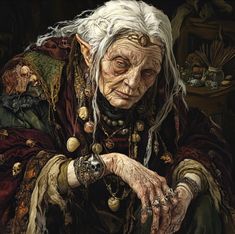
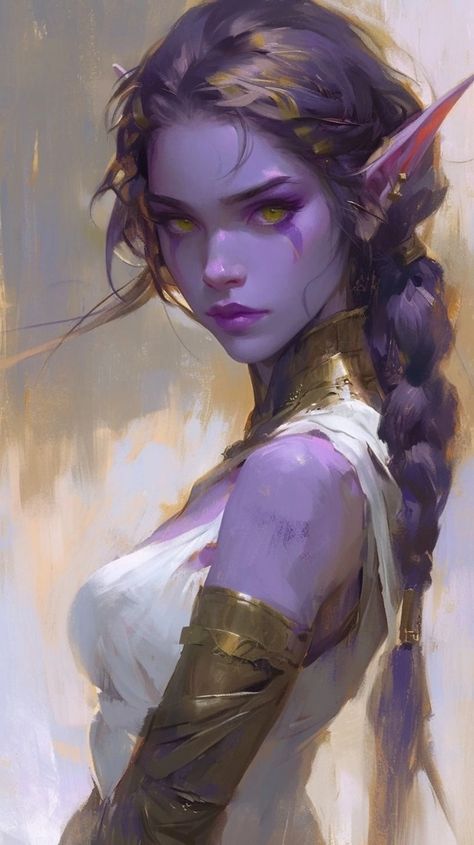
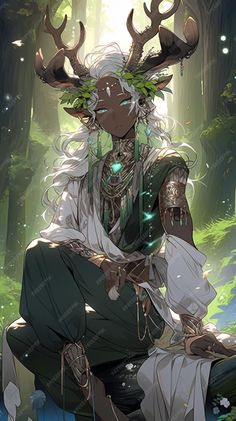
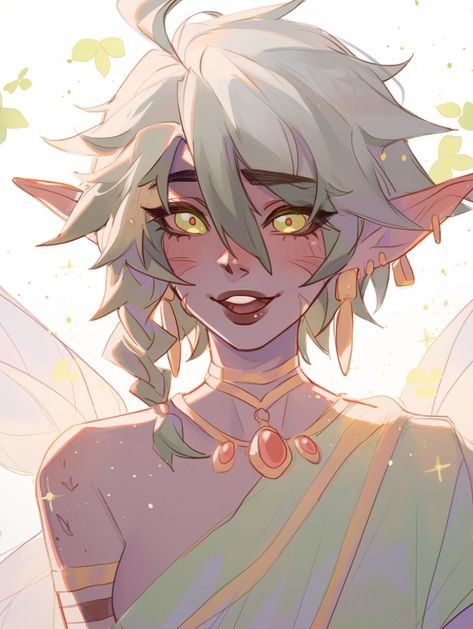
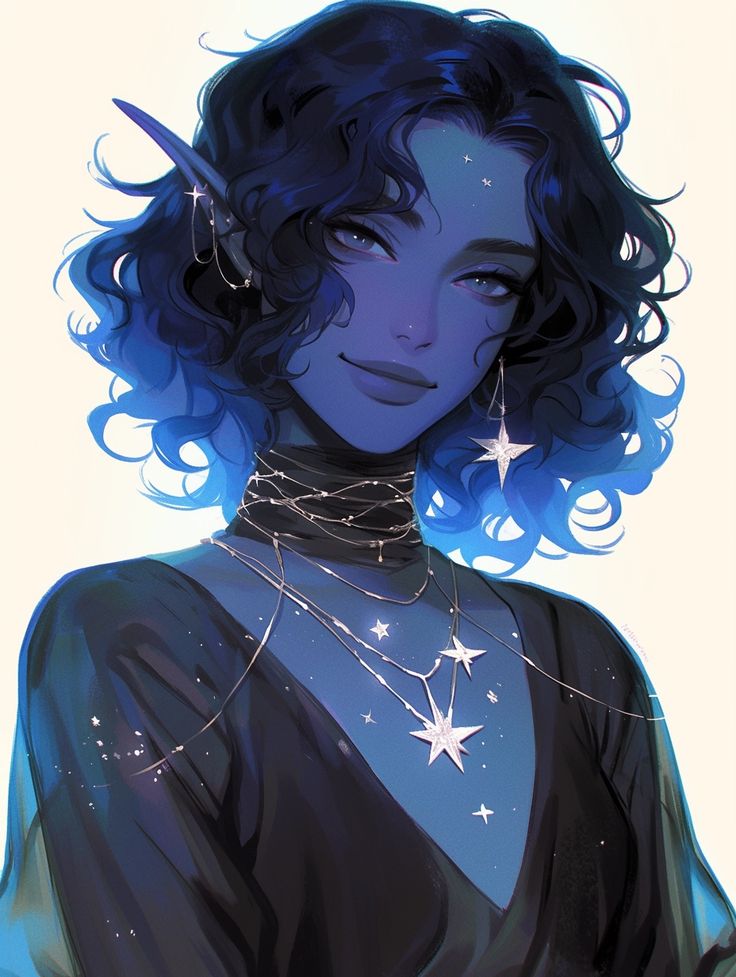







Comments